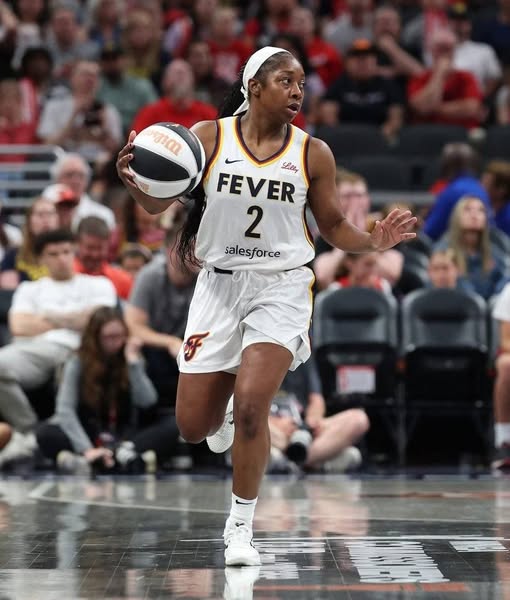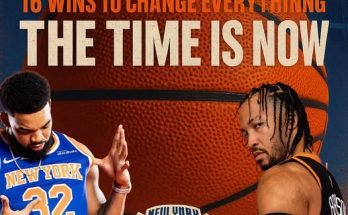Aari McDonald has endured more twists in the early stages of her WNBA career than many players experience over an entire season. Two months ago, she was cut by the Los Angeles Sparks shortly before the start of the 2025 campaign. Fast forward to early June, and she found herself signed by the Indiana Fever under the league’s emergency hardship exception, filling in for an injury‑stricken backcourt. In a cruel twist, league rules forced the Fever to waive her just days later. Every step in between revealed both her resiliency and the brutal mechanics of roster rules in professional women’s basketball.
It began in May 2025, as teams finalized rosters for Opening Night. Despite participating in Spark training camp and re-signing in February (, McDonald failed to make the final 12-player cut. For a former third-overall pick who had spent the previous year averaging 8.7 points and 3.7 assists in 26 games, that early setback could have been a career-defining blow. Instead, it became a catalyst.
McDonald joined the Sparks for the 2024 season after being traded from Atlanta, where she had spent her first three pro seasons. A first-round gem at Arizona, McDonald set Big Ten records before being drafted third overall in 2021, making the WNBA All-Rookie Team, and averaging 11.1 points per game in her sophomore year . Despite this pedigree, her fit with the Sparks unraveled—she was waived on May 14, 2025 .
As one door closed, another unexpectedly swung open. By early June, the Fever were reeling. Rookie sensation Caitlin Clark was sidelined with a quadriceps strain, veteran Sydney Colson was injured, and Sophie Cunningham had sprained her ankle (. With their guard rotation decimated and fewer than 10 game-eligible players, Indiana qualified for a short‑term fix: the WNBA’s emergency hardship exception.
On June 2, 2025, Indiana seized the opportunity to sign McDonald, marking her return to the league (. The move was immediately hailed as a win-win. Fever coach Stephanie White praised McDonald as a “true point guard” who brings energy, defensive intensity, and ball-distribution capabilities . Field Level Media underscored that she filled the Fever’s urgent needs at both ends of the floor: “They desperately need another ball-handler, and McDonald is a pure point guard” .
McDonald responded to the call with grace and gusto. She flew in with barely enough prep time yet dived headfirst into the Fever’s system—studying film during her flight, absorbing conversations with coaches, and asking informed questions . Her debut against Washington Mystics was part adrenaline-fueled audition, part proof of craft. She logged 27 meaningful minutes off the bench, tallied 7 points, 5 assists, and 3 steals, and keyed the defensive energy that helped snap Indiana’s three-game losing streak (.
Her imprint didn’t go unnoticed. Clark praised her preparedness and competitive IQ; White lauded her toughness and floor awareness; teammates marveled at her ability to grasp the offensive scheme despite limited prep . SBNation described her performance as “a sterling debut,” noting how quickly McDonald shifted into “survival mode,” treating this as her audition and laying bare her hunger to stick in the league
Over her three-game hardship stint, she delivered an impressive stat line: 11 points, 3 assists, and 2 steals per game (. She played heavy minutes, contributed on both ends, and gave Indiana a fighting chance—precisely what they needed.
Yet WNBA hardship contracts come with an expiration date. When both Clark and Cunningham returned to health, Indiana was no longer eligible under the hardship exception. League rules require teams to revert to ten active players once they regain enough healthy bodies, which meant McDonald had to go (. On June 13, 2025, just 11 days after joining Indiana, McDonald was waived .
Coach White spoke glowingly of her impact: “She’s been the ultimate pro… her high IQ. She’s a dog and we’re going to miss her” (. She emphasized McDonald would “find a spot on a roster,” reinforcing that her talent and tenacity likely meant more chapters awaited .
True to that forecast, on June 25, Indiana brought McDonald back—this time under a standard veteran minimum contract. To make room, the Fever waived DeWanna Bonner, another veteran . McDonald’s return came with optimism: she had épuré fans and front office alike, cementing her stature in Indy .
Now 26, Ari McDonald has weathered the WNBA’s storm foundations. She’s been a lottery pick, rookie standout, starter-level player, camp casualty, emergency fill-in, then standard signee—all within five years. Her story underscores the stark realities of the league: for every wage-earner superstar, there’s a resilient guard fighting for every spot, every day.
But McDonald belongs to the latter group, and her trajectory is emblematic of that class: poised talent, fierce defender, competitor. Her career averages—8.6 points, 2.8 assists, 2.0 rebounds per game over 116 games—belie the impact she brings when called upon . Every snapshot underscores a player who zooms in on her opportunity, then refuses to zoom out until she’s erased doubt.
What makes her journey special aren’t just the stats, but the resilience. How many players flying from coast to coast, arriving with no practice, memorizing play calls on the way to the arena, and then delivering two-way production exist in the WNBA? McDonald did exactly that, and did so within six days of cut-to-signing-to-waive.
Indiana isn’t alone in tapping hardship contracts, but their treatment of McDonald—welcoming her back immediately after the exemption expired—is rare. The Fever clearly saw a long-term role, not just short-term reinforcement .
Her re-signing also speaks volumes about roster mechanics. With salaries fixed and cap space limited, roster spots precious, teams often hedge their bets via non-guaranteed contracts. Indiana had the roster open and the cap flexibility to bring her back after the exemption expired ﹣ a savvy front office move that rewarded performance and fit .
League-wide, McDonald’s story highlights a structural tension: WNBA rosters max at 12, with a minimum of 10 active game-eligible. There’s no developmental league to lean on. Instead, hardship contracts give temporary shelf life to players while rosters are healed—but those contracts vanish like mist once healthy bodies return . Conversations are ripe about expanding rosters—NBA teams carry 15 plus two-ways—but WNBA leaders are instead negotiating pay and CBA rights. Roster size might be next.
Where does McDonald go from here? For Indiana, she’s already part of their rotation—if she sustains production, defenses her tough, and teammates trust her, she’ll stay. If not, the playoff push might relegate her role. Across the league, her audition is fresh in scout minds. Field Level Media already flagged her as a valuable defensive guard/ball-handler combo that could “add crucial depth” for many teams during injury stretches .
But the central theme remains: Aari McDonald turned uncertainty into opportunity. Cut from the Sparks, she rebuilt in Indy. Waived again, she was back by month’s end. Each obstacle sharpened her resolve, fortified her reputation, and validated her talent. Few players in WNBA history have compiled a résumé like this across mere weeks of the season.
What lies ahead? It’s uncertain. Injuries heal, rosters rebalance. But McDonald’s work ethic, film savvy, and fearlessness in learning a new playbook mid-flight are rare commodities. If she harnesses them consistently, the Fever—and perhaps other teams—will have her back. She’s more than a short-term stopgap; she’s a signal of adaptability in a league that demands it.
At just 26, she still has prime years ahead. Should rosters expand or two-way options emerge in future CBAs, guard/defenders like her will be front and center. But even under current constraints, McDonald has carved a space. Her journey to date is proof positive: grit, craft, and readiness can surpass any roster glitch.
She may not yet have a secure, long-term home, but Aari McDonald has redefined what success looks like in the league’s scrappiest trenches—one hardship contract at a time.
In just over six weeks, she’s been waived, signed, waived, signed again, all while averaging double figures in scoring, initiating offense, and igniting defense for one of the league’s most high-profile teams. That arc—in less than half a season—captures both the volatility and opportunity within the WNBA.
The question is: will McDonald stick? If she continues making plays like she has, the league will make space. If not, she’ll again battle roster margins—an old nemesis. But either way, her resolve is no phantom. And for now, she’s Indiana’s guard with purpose—a presence turned profession, and a player who refuses to be waived.



